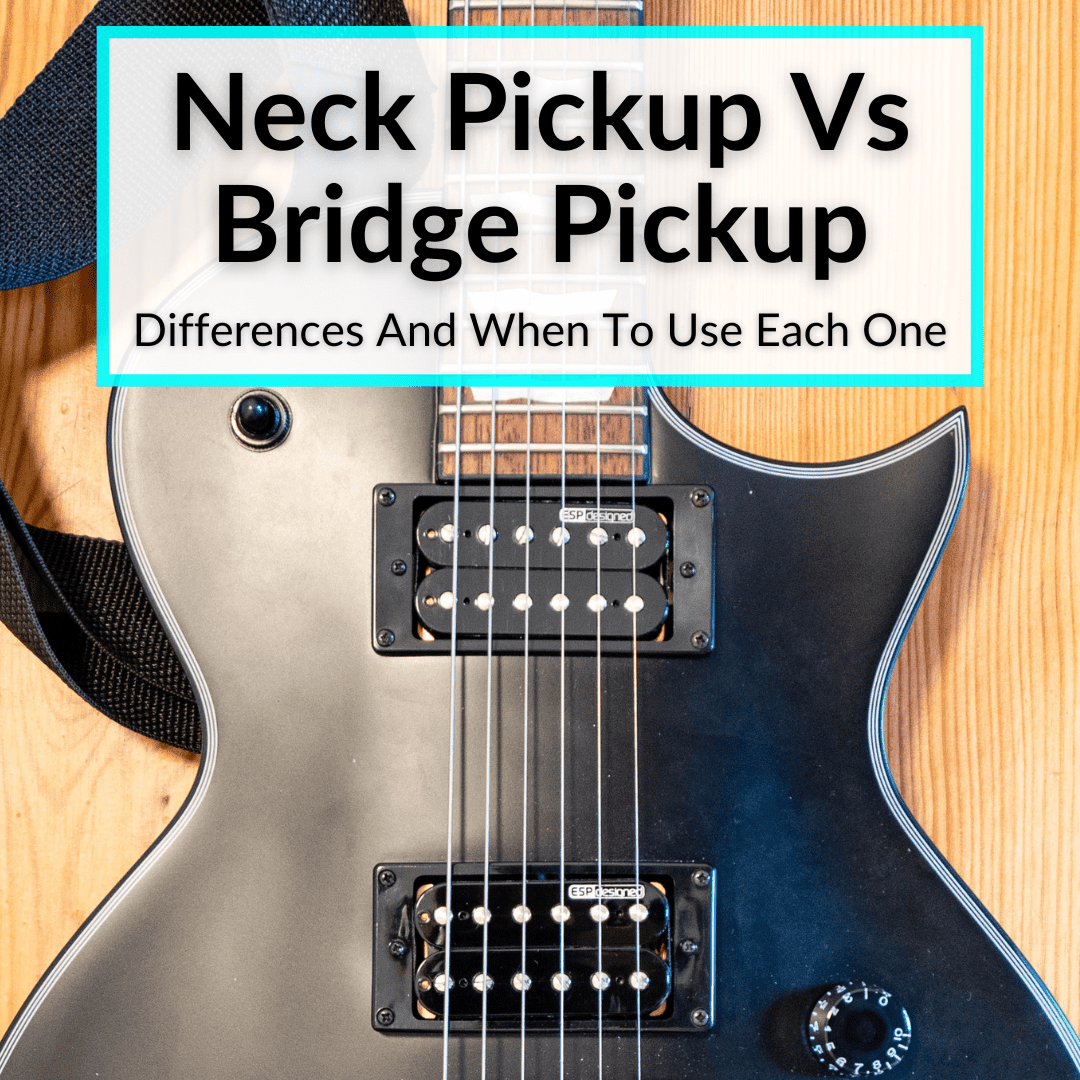 Most guitars have at least two pickups.
Most guitars have at least two pickups.
Some have three.
Whether they have two or three, they all have one pickup that is closer to the neck and one that is closer to the bridge.
But their location on the guitar is not the only thing that is different.
In fact, their location is the reason for the most important difference between the neck pickup vs bridge pickup.
The difference that makes each pickup excel for different uses.
Keep reading to learn all about the differences between bridge pickups and neck pickups. We will also cover the types of situations when it is better to use one or the other.
Neck Pickup Vs Bridge Pickup
We will begin our comparison of the bridge pickup vs neck pickup by looking at each position individually, before comparing them directly and discussing the advantages of each. At the end, we will go into the situations where it is best to use one pickup position or the other.
The Neck Pickup
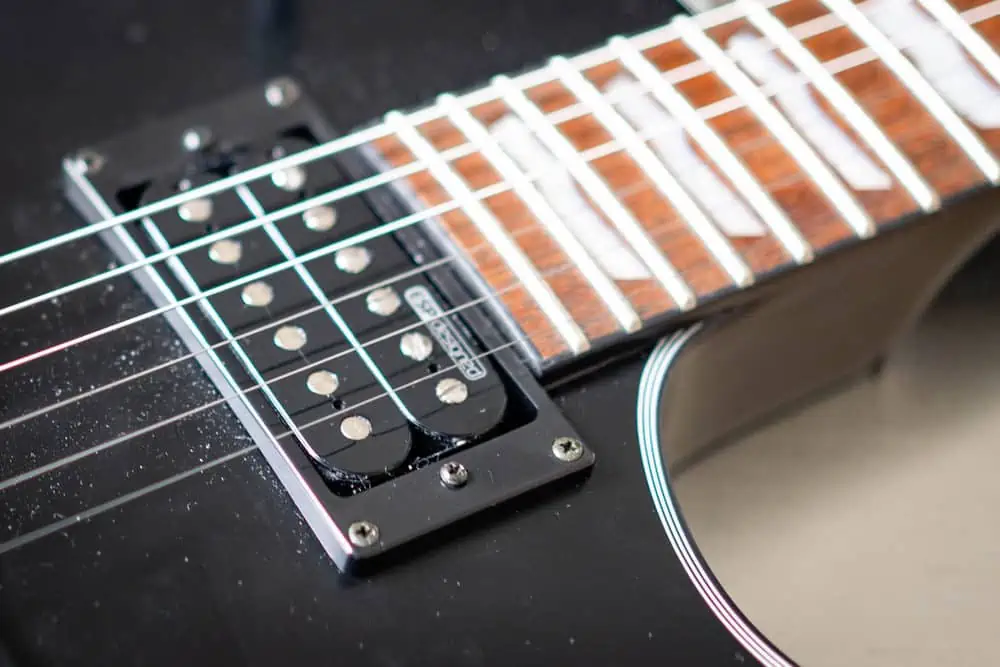
The pickups located near the neck of a guitar are obviously named after their location on the instrument, just like bridge pickups.
Even if two pickups from the same manufacturer with the same specifications (although all brands tend to design position-specific pickups) are installed on a guitar, the neck pickup will always sound slightly louder, warmer, and to a degree, cleaner.
The intensity of the vibrations that the strings produce is much higher in the area where neck pickups are positioned, simply because the magnet is closer to the neck. The neck pickup recognizes more vibrating frequencies, and thus produces a significantly higher output.
The Bridge Pickup
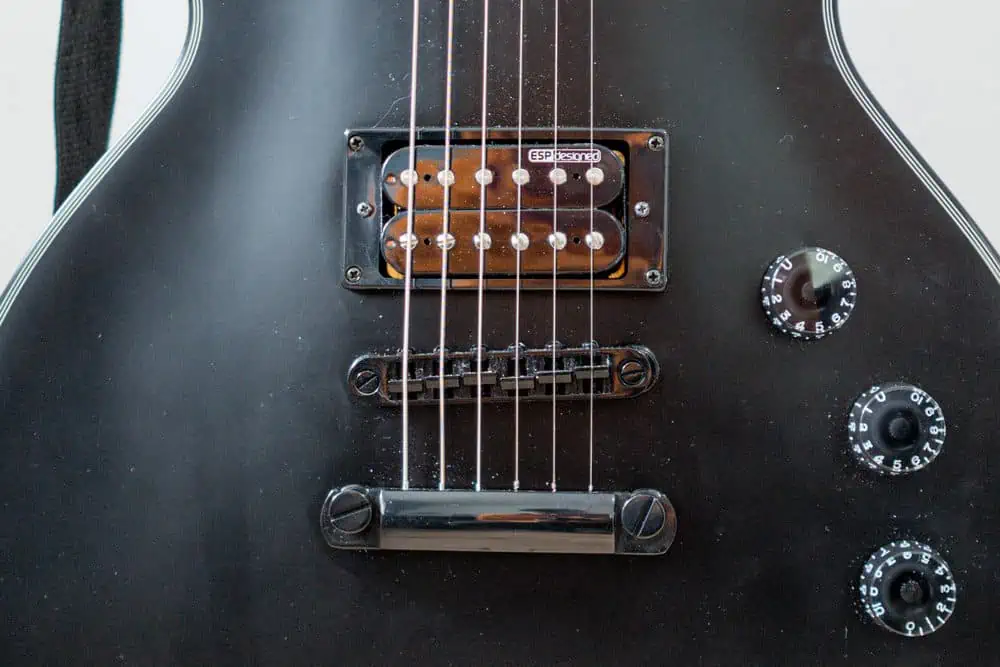
As you undoubtedly can guess, this is a pickup located near the bridge of your guitar. In layman’s terms, it’s the pickup that is positioned on the center of the body, or near the tail end.
Pickups “pick up” the frequencies produced by vibrating strings. Those vibrations get weaker the further they go. Since bridge pickups are located at the end of the guitar’s body, these signals are usually much weaker than higher up on the body.
That’s the main reason bridge pickups often sound a bit quieter than neck pickups. Pickup manufacturers, such as Seymour Duncan or PRS Guitars, purposefully create bridge pickups that can complement the desired tone, making the sound crispier and sharper.
The quieter nature of bridge pickups gives more versatility to the player, and improved control over the guitar’s tone.
Differences Between Bridge And Neck Pickups
Bridge and neck pickups sound much different, which is arguably the most important distinction between the two. Neck pickups are “hotter”, and boast a higher volume, and their tone can be described as sonically warm and smooth.
On the other end, neck pickups are bright, somewhat punchy, considerably quieter than neck pickups, and allow the guitarist to experiment with high-gain settings and pedals that would often cause the tone to break (e.g. pitch shifters, ultra-fuzzy overdrives, and such).
Aside from tone, neck and bridge pickups feature different specs. Again, even if they are the same pickup type and come from the same brand, the hardware used to manufacture them, and often even the techniques deployed to make these pickups, are usually different.
Another important difference between bridge and neck pickups is their suitability for different playing styles, genres, and even certain sonic settings.
For example, most guitarists use bridge pickups to play rhythm, when the distortion is cranked all the way up to 13, only to revert to the neck pickup when the solo comes on.
Neck Pickup Vs Bridge: Similarities
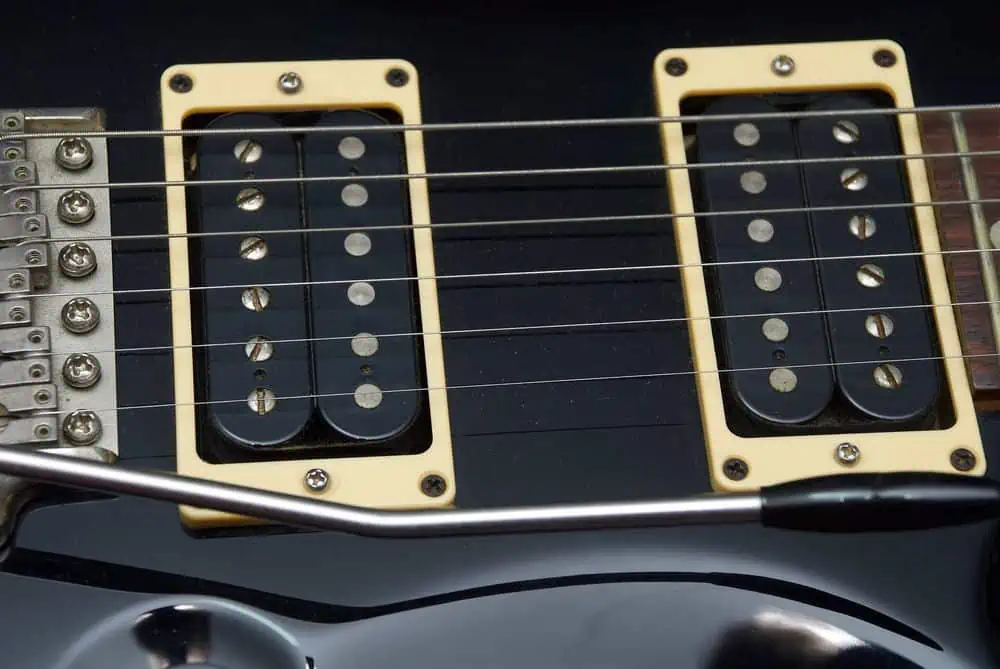
Both neck and bridge pickups function in the same way – they receive signals from string vibrations and convert them to electricity, which then becomes the sound.
Depending on how close (or far) they are from the place where the strings are plucked, they can be louder or quieter, but the bridge pickup can never eclipse the volume of the neck pickup.
These pickups usually look the same. They may even be identical in terms of dimensions, although some guitarists prefer to use pickups from different companies, depending on what kind of tone they’re after.
Advantages Of The Neck Pickup
This pickup is louder and warmer than its bridge-positioned counterpart. With a hotter output, the neck pickup can save the show, if you’re playing on a weak amp and have a modest selection of pedal effects at your disposal.
One of the main advantages of neck pickups is that they allow your tone to soar and cut through the noise with the flip of a switch.
Advantages Of The Bridge Pickup
The rhythm player’s go-to, bridge pickups are good for just about everything but soloing. You can use any pedal or effect to paint your tone, since this pickup is naturally fairly quiet.
Its sharp accents are great when paired with the right distortion, fuzz, or overdrive, which you’d normally struggle to properly use with a neck pickup. When you want your audience to feel your guitar, rather than hear it, use the bridge pickup with high gain and high volume settings.
When To Use The Neck Pickup
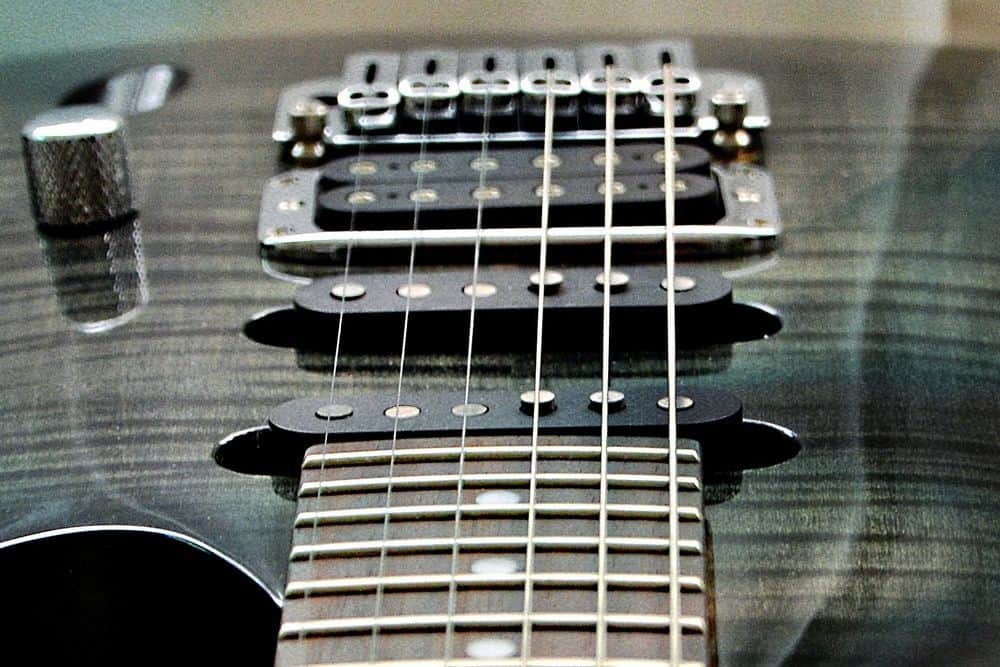
Most guitarists alternate between using neck and bridge pickups, depending on their playing style and what the current song requires. Neck pickups are generally preferred for solos, clean tones, and songs where the guitarist’s tone isn’t overwhelming but could use a bit of extra volume.
Loud but fairly wild and hard to tame, most neck pickups will overload high-gain tones, so you may want to consider using softer effects when customizing the sound of your guitar
The neck pickup works like a charm with clean tones, especially when combined with a bit of reverb, since its overly pronounced highs can leave the sound a bit brittle at times.
Guitarists who play in a band alongside another guitar player usually tend to switch over to the neck pickup when announcing a new melody, reverting to the bridge to play rhythm parts and riffs. For clean arpeggiated tones, always use a neck pickup. What is a riff on guitar exactly? That article has all the answers.
When To Use The Bridge Pickup
The bridge pickup is generally considered an all-rounder. It won’t make your guitar tone too strong. It doesn’t accentuate any section of the frequency range. And it works well with pretty much all guitar effects and pedals.
As a versatile pickup, it doesn’t really excel in any field of performance. Guitarists who mainly play on the bridge pickup usually have to look for workarounds for the pickup’s drawbacks.
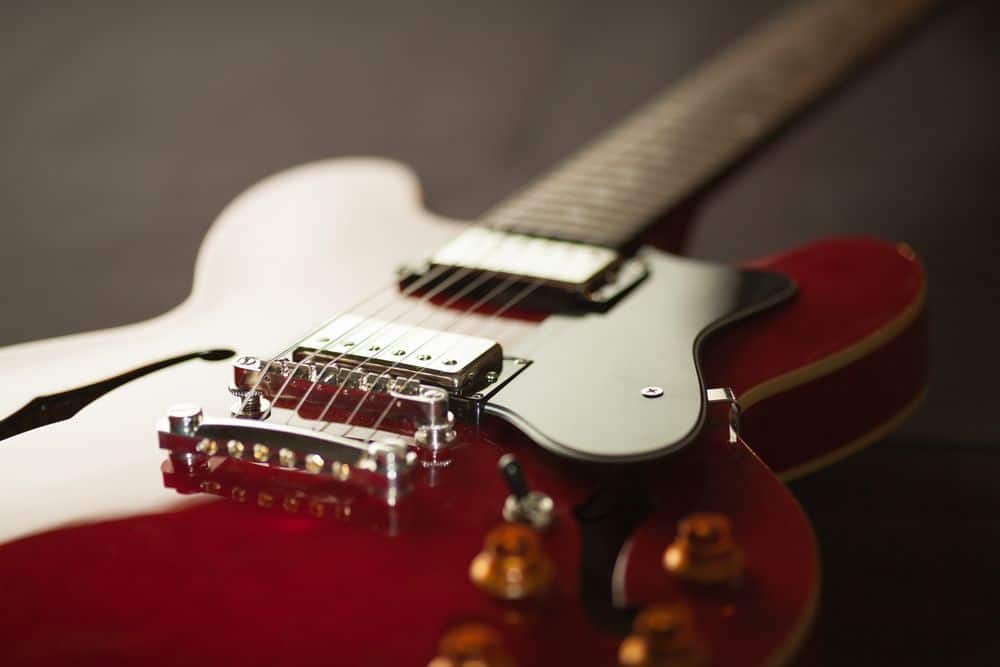
If the tone is too “cold”, a quality EQ pedal may make it fuller. If the tone is too weak, volume-regulating pedals are a must
Punchy but sharp, the natural sonic signature of the bridge pickup is a perfect canvas for wilder guitar effect pedals, mainly because its innate quietness responds better to high-gain pedals and modes.
For bands that feature only one guitar, you should normally stick to bridge pickup while cranking the volume up as high as you can, so that your tone can compete with the rest of the instruments. The ‘neutral’ pickup position, where both pickups are active at the same time, works even better, though.
Bridge Pickup Vs Neck Pickup: Final Thoughts
When comparing the neck pickup vs bridge pickup, the most obvious difference is in the tone they produce. Assuming they are botht he same pickup, of course. Many guitars have completely different pickups in the bridge and neck positions, so of course they will sound different.
But even if both positions contain the exact same pickup, the neck pickup will always be brighter and louder, due to its position higher up on the strings. That makes the neck pickup much better suited to things like playing lead and soloing.
The bridge pickup, on the other hand, is more versatile. You can use it with far more effects. Of course, you also have the option to turn on both pickups at the same time. In some ways, that gives you the best of both worlds.
If you’re not sure which type of pickup is best for you, we have three comparison articles that can help:
Leave a Reply